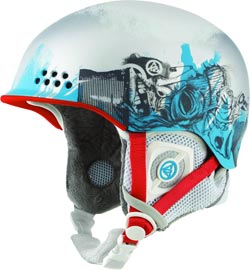ski binding
Question
My right ski binding began to squeek last season and felt a bit loose. It's 17 years old. I have new boots but still have the recreation skiis. How long do ski bindings last and is the squeeking a problem? Don't want the bindings to break while skiing. Is it time to go out and buy new shape skiis and bindings? I only ski about 1-2 times a year. Thanks
Answer
I would advise you to get onto new equipment for a few reasons. The issue of safety is first and the part that the condition of the equipment plays in this. The binding's function can be summarised into two parts: retention and release. The goal is to keep you on the skis when necessary and to release you from them when necessary. Safety issues can occur under both conditions. For example a ski that suddenly releases unnecesarrily in the trees could be fatal. As well a binding that releases too slowly could result in significant injury to the lower extremeties. We need to remember that the original function of the binding was to reduce injury to the joint closest to it (the ankle)and the farther up the body the force (torque) travels the farther away the potential area of injury is from the binding. Little known by the consumer is that a 10% difference between tested release values in a bench test (performed with special equipment at a shop) and the expressed values from the manufacturer at a specific setting are signs of wear significant enough to cause concern. It doesn't take much given the environmental conditions they are exposed to for the binding to fall within this range. How the ski and binding are transported durng the season and stored in the off season has implications as well.
Secondly the significant changes in binding design and technology in the last 17 years have dramatically improved the ability of this crucial piece of your equipment to differentiate between necessary and unnecessary release conditions. The is far less chance of coming out when you didn't have to and as a result there is less need to rely upon the maximum settings on the binding to hold you in. As we all ski at a variety of speeds and in a variety of conditions it has always been my contention that it is best to ski on the lowest setting safe for the body in order to enable the skier to release under slow twisitng falls easily (the situation that can, short of collision, cause the most debilitating injuries to the lower body.)
Thirdly there is the fun factor. If your skis are the same generation as the bindings then you have missed what is without a doubt the single most important evolution in the sport since the late 1950's (I started sking in 1960 so I've lived through it all). Technically and technologically no other design revolution in this sport has had as much of an impact on the quickness with which skiers can acheive desired performance on the snow as the shaped ski. It has resulted in a revolution of sorts and broadened choice in the sport into areas that would not have been possible as little as 10 years ago. Get on board but also be aware that its not the same technique anymore though it resembles parts of it. If you want more information on the reasons shaped skis work differently from the boards you currently ride then check out some of my other responses over the years to other skiers making this change.
Make the change.
Good luck and good skiing,
Glenn Allen
How do i become an instructor?
Top Race Skis


